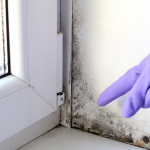Busting myths and unveiling the truth about rising damp.
Rising Damp is a notorious issue that plagues many Indian homes, leading to structural damage, health hazards, and unsightly aesthetics. Unfortunately, it is also riddled with myths and misconceptions that can leave homeowners feeling overwhelmed and confused. In this blog, we’ll debunk common misconceptions surrounding rising damp in India and introduce you to Berger Homeshield Rising Dampstop, a reliable solution that can put damp worries to rest.
Misconception 1: Rising Damp is Just a Cosmetic Problem
One of the most prevalent myths about rising damp is that it’s merely a cosmetic issue, causing peeling paint and unsightly stains on walls. However, the truth is much more insidious. Rising damp is a result of water rising from the ground through capillaries in masonry, carrying with it salts and moisture. Over time, this can cause significant structural damage, weakening the building’s foundation, and compromising its integrity, which is why it is important to reduce dampness in walls.
Misconception 2: It Can Be Fixed With a Fresh Coat of Paint
Another common misconception is that a new coat of paint can cover up the effects of rising damp. While painting may temporarily mask the stains, it won’t address the underlying issue. Rising damp continues to wreak havoc beneath the surface, eventually causing more extensive damage that will be far costlier to repair.
Misconception 3: Rising Damp is Not a Problem in Dry Climates
Some people believe that rising damp is a problem only in regions with high rainfall or high humidity. However, rising damp can occur in various climatic conditions, even in drier regions. The water table, soil composition, and the way a building interacts with the ground are significant factors that can lead to rising damp, making it a concern for homes across India.
Misconception 4: DIY Solutions are Effective
Many homeowners attempt to tackle rising damp with DIY solutions, like waterproof paints or sealants. While these may provide temporary relief, they don’t address the root cause. Rising damp is a complex issue that requires professional assessment and intervention to ensure a long-term solution.
The Rising Dampstop Solution
Now that we’ve debunked some of the common myths surrounding rising damp, it’s time to introduce a reliable solution – Berger Homeshield Rising Dampstop.
Professional Assessment: Rising Dampstop begins by conducting a thorough assessment of the property to identify the extent and cause of the rising damp issue. This step is crucial in determining the appropriate solution.
Innovative Technology: Rising Dampstop employs cutting-edge technology and innovative methods to address rising damp at its source.
Experienced Team: With a team of experienced professionals who understand the nuances of Indian building construction and local conditions, Rising Dampstop ensures that the solution is long-lasting.
Long-Lasting Results: Rising Dampstop’s approach isn’t just a quick fix; it’s a lasting solution that provides peace of mind for years to come. Say goodbye to rising damp issues and the accompanying worries about the property’s structural integrity.
Conclusion
Rising damp is a prevalent issue in India, and it’s crucial to separate the facts from the myths surrounding it. DIY wall dampness treatment and temporary fixes won’t cut it when it comes to addressing the underlying problems.
For a reliable and effective solution to rising damp, look no further than Berger Homeshield Rising Dampstop. Take action and protect properties from the hidden dangers of rising damp.
To control dampness in walls, SMS HS to 56767 and get home walls treated with Berger Homeshield Rising Dampstop.


 Get in Touch
Get in Touch
